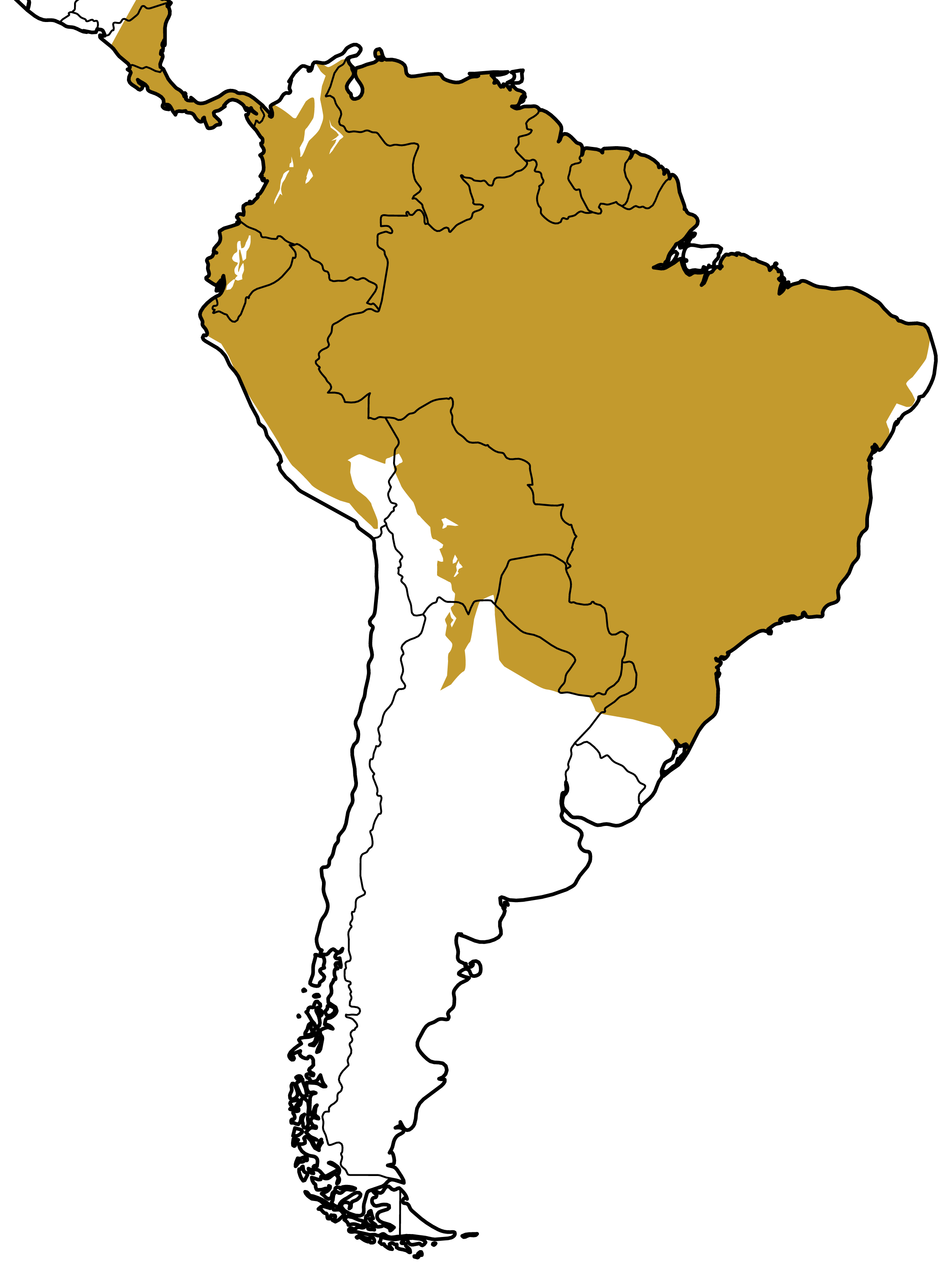ocelot


Although found from the southern USA to northern Argentina, the ocelot has become extinct in some regions. Their habitats are found at altitudes of up to 1,200 meters.
Male 8kg to 16kg. Female 7kg to 9kg
body between 67cm and 100cm, tail 35cm
20 years in captivity
Important data
MAIN FEATURES
It is a medium-sized felid (family of carnivorous mammals), with a short, bright coat ranging from light yellow to reddish and gray. It may have horizontal stripes on the body. The belly is lighter, and the tail has dark bars at the tip. It has black ears.
TOP THREATS
In the 1960s the species suffered from the illegal fur trade. Today, that is forbidden. Other threats are deforestation and being runover.
DIET
It feeds mainly on rodents, but also from larger animals such as reptiles, birds and fish. It is a highly adaptable species.REPRODUCTION
At one and a half years old, females are sexually mature and begin to enter heat, which lasts a week. They have a gestation period of 72 to 82 days, and usually have one baby, which is raised only by the mother.BEHAVIOR
Active for 12 to 14 hours a day, but typically hunts at night.
TRIVIA
Its black spots and longitudinal bands form a unique pattern, which identifies individuals, similar to fingerprints in humans.
Geographical distribution





